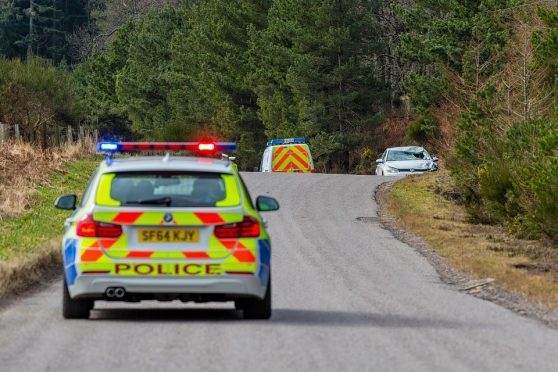Paramedics sent to treat a teenager who died in a Moray road crash arrived on the scene more than three times later than they should have.
Keiran McKandie was struck by a car while cycling his mountain bike outside Elgin, but there were no ambulances available at the town’s Dr Gray’s Hospital.
A team was instead sent from Tomintoul to tend to the 16-year-old on the B9010 road at Miltonduff, taking 27 minutes to arrive.
The Elgin Academy pupil was pronounced dead at the scene.
The Scottish Ambulance Service says its average response time to a life-threatening emergency in the Grampian area is seven-and-a-half minutes, and its standard protocol is to reach such incidents within eight minutes.
The organisation stressed that the nearest available ambulance is “always dispatched straight away” when there is a potential for loss of life, but that “variable factors” impacted on response times.
Crews in Elgin were reportedly busy dealing with other patients when the emergency services were alerted to the crash involving Keiran McKandie.
Keiran’s family last night declined to comment on the delay, but said they had not been told that the ambulance which attended the accident had come from Tomintoul.
The tragedy, at 11am on Sunday, March 20, followed another fatal incident in Lossiemouth just hours earlier.
William Rodden, 38, died at 1am after reportedly suffering a fall from a wall on the town’s Pitgaveny Quay.
Elgin crews were also busy on that occasion, and ambulances were deployed from Buckie and Nairn.
The vehicle from Buckie arrived to treat Mr Rodden 16 minutes after being summoned.
A spokesman for the Scottish Ambulance Service said: “The average response time to a potentially life threatening call in Grampian is around seven-and-a-half minutes.
“The standard is to reach three quarters of such calls within eight minutes.
“This takes account of variable factors that impact on responses, such as sudden high demand, as well as changing weather and road conditions.
“In a potentially life threatening emergency, the nearest available ambulance is always dispatched straight away.
“At the time of both of these incidents, local crews in Elgin were busy dealing with other patients.
“Two ambulances, one from Nairn and another from Buckie, were sent to the incident in Lossiemouth, and the Buckie crew were first on scene in around 16 minutes.
“A Tomintoul ambulance responding from Dr Grays in Elgin was the first ambulance on scene at the incident on the B9010 in around 27 minutes.
“It was closely followed by an air ambulance helicopter and road ambulance from Inverness.”
Last night, Moray MP Angus Robertson vowed to press the Scottish Ambulance Service on whether more cover is required for the region.
Mr Robertson said: “It is a concern to hear that there has been a shortage of ambulances on two recent occasions, especially when people have sadly lost their lives.
“It is a highly distressing time for the families and friends of the victims of these tragedies, and it is important that there is confidence in our emergency services.”
Mr Robertson said it was “understandable” that high call volumes could occasionally place a strain on the emergency services.
But he added that such scenarios should prompt a review into the circumstances surrounding the shortages.
He added: “I am writing to the ambulance service seeking further clarity on these recent incidents to understand whether there is a need for increased cover in the area.”
Ambulance response times shock
By
Ben Hendry
